EMAIL SUPPORT
dclessons@dclessons.comLOCATION
USFI Switching Mode
Cisco UCS Fabric Interconnect support two types of Switching modes: end-host mode (EHM) and Standard Ethernet Switching Mode. Default Switching mode is EHM, which eliminates he use of the Spanning tree protocol (STP) on Fabric interconnects and is recommended.
Ethernet Host Mode
In EHM, FI behaves in following ways:
- No Upstream MAC learning, Only MAC learning is from Southbound blades.
- No STP
- Designated Broadcast/Multicast Uplink port – All other uplink interface that listen BC/MC, forwards to bit bucket
- RFP check
- Deja-Vu-Check
Let’s understand one by one these concept:
MAC address learning - EHM
- From Blade server-1: vNIC1 (having mac 00A1) is pinned to UCS FI-A uplink port channel Po1. vNIC2 (having mac 00B1) is pinned to UCS F1-A uplink 1/17.
- From Blade server-2: vNIC1 (having mac 00C1) is pinned to UCS FI-B Uplink Port 1/19.
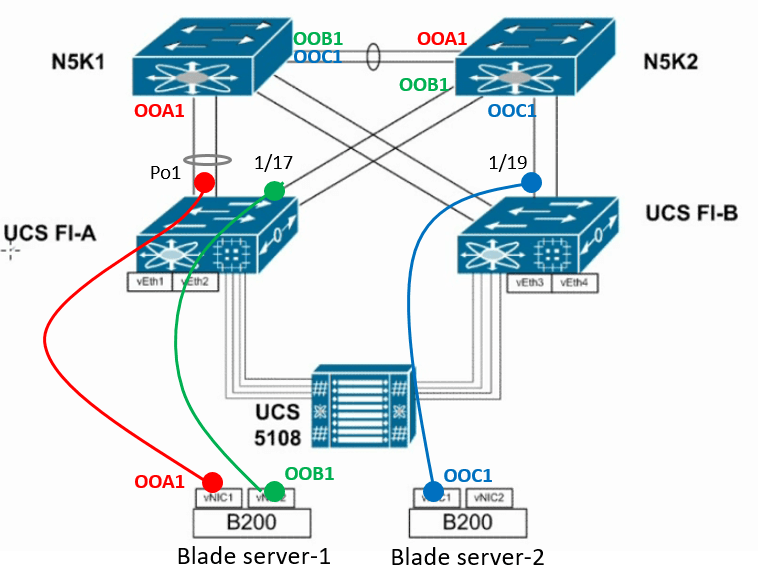
Traffic movement from N5K1 to blade servers
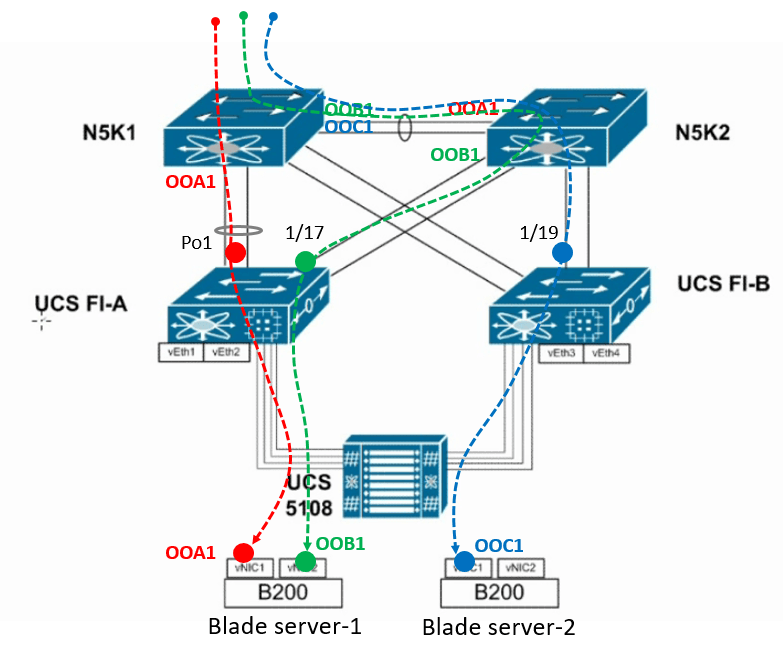
Here, traffic from upstream will follow the same port , over which MAC address of Southbound Server were learned or Pinned.
Designated Broadcast/Multicast Uplink Ports
- For any Broadcast/Multicast southbound traffic from N5K moving downward toward UCS Fabric Interconnects, there has to be a designated port on FI-A and FI-B.
- Suppose UCS FI-A chooses Po1 as its designated Broadcast/Multicast traffic receiver Port.
- Suppose UCS FI-B chooses Port 1/19 as its designated Broadcast/Multicast traffic receiver Port.
- Any Broadcast/Multicast traffic coming from N5K to UCS FI, but not on the defined as designated Broadcast/Multicast ports will be dropped.
- Outgoing Broadcast/Multicast traffic is allowed on all the ports
Broadcast/Multicast Traffic
- Any incoming Broadcast/Multicast traffic is allowed only on designated Broadcast/Multicast ports only and will be dropped on any other ports. This is to avoid loops as no STP is running.
- Outgoing Broadcast/Multicast traffic is allowed on all the ports
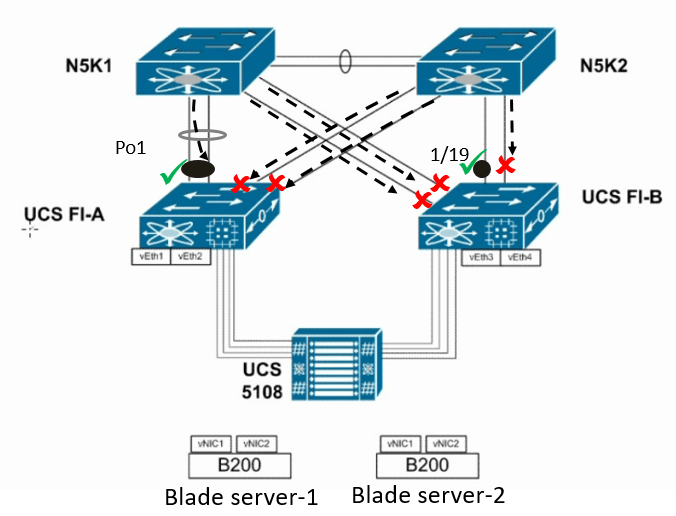
- Suppose UCS FI-B chooses Port 1/19 as its designated Broadcast/Multicast traffic receiver Port.
- vNIC2 (having mac 00B1) is pinned to UCS FI-A uplink 1/17
- Any Broadcast/Multicast outgoing traffic coming from Server -1 vNIC 2 to UCS-F1-A will be blocked at all the ports on UCS FI-B except 1/19.
- Any Broadcast/Multicast outgoing traffic coming from Server -1 vNIC 2 to UCS-F1-A and then again coming back to UCS FI-A via N5K1 to Po1 will also be dropped. This is called Deja-Vu Check (If I have seen that traffic before ……drop it). This prevents the loop.
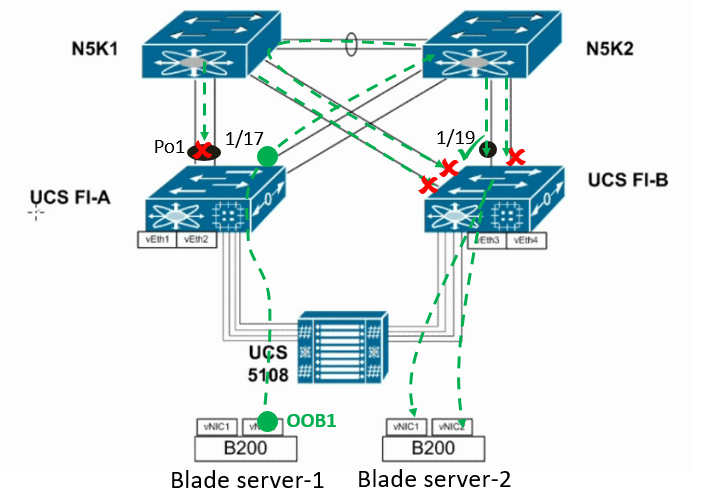
Reverse Path Forwarding Check (RPF Check)
- Any traffic coming to UCS FI-A and destined to Server -1 vNIC1 (00A1) on its pinned port channel Po1 will be allowed.
- Any traffic coming to UCS FI-A and destined to Server -1 vNIC1 (00A1) on any other port except its pinned port channel Po1 will be dropped.
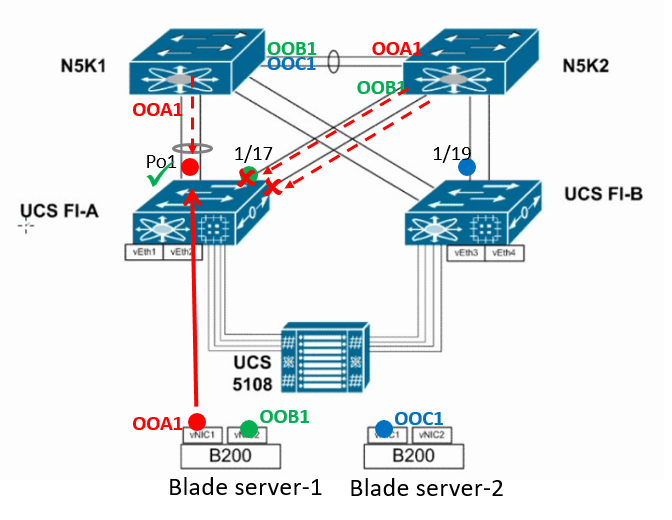
Inorder to Configure EHM
- Log in to UCS manager | Click Equipment | Click on Fabric Interconnect A /B
- In The Status Area in work pane shows the current Ethernet Mode configuration which is End Host.
- In Action area of work pane, you can see that it is currently configured as Ethernet host Mode.
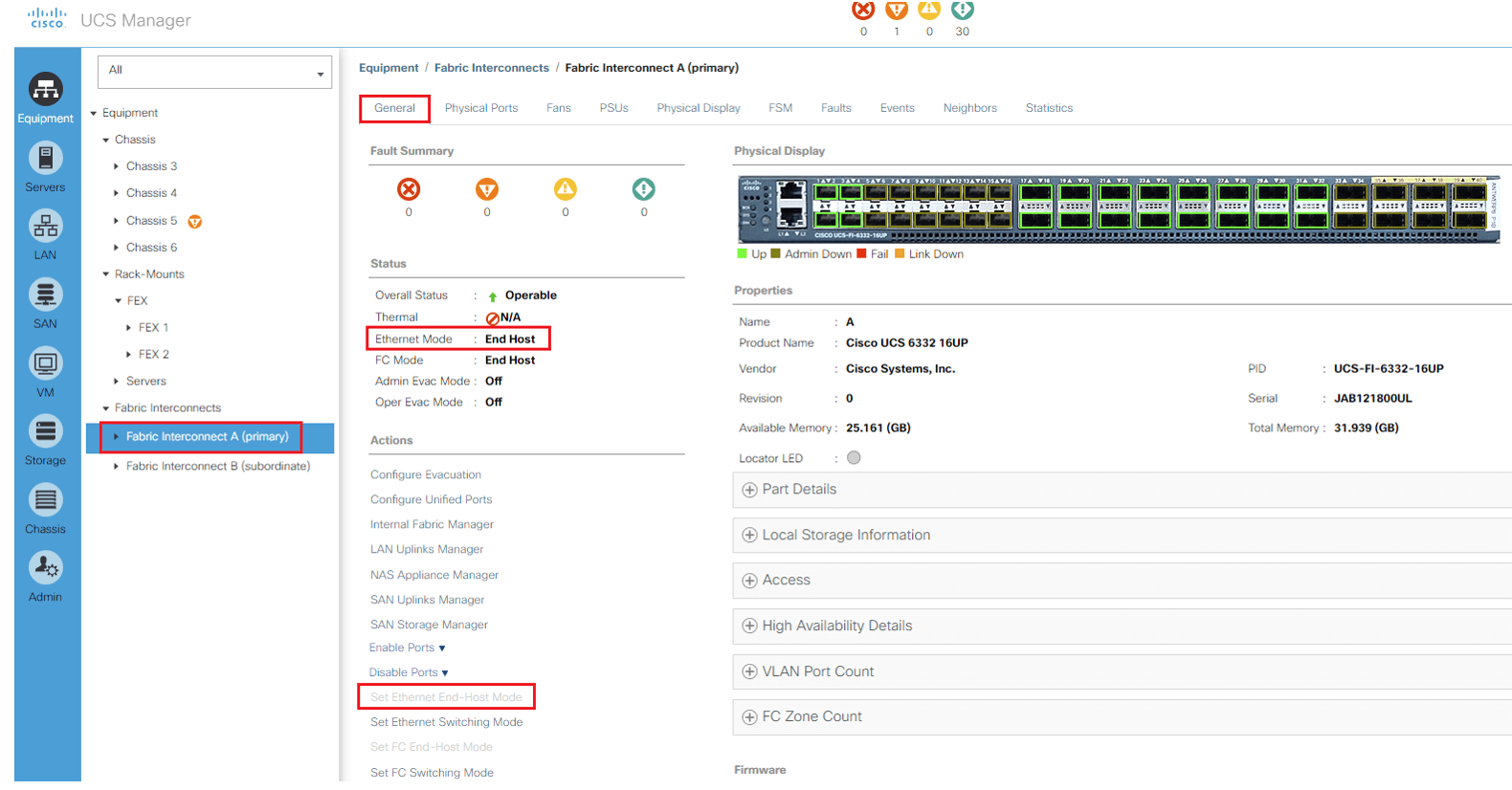
Ethernet Switching mode
In this mode, Fi is configured as a standard Ethernet Switch with SP configured for loop avoidance. The up-link ports are configured as forwarding or blocking as per the STP algorithm.
Now if you want to change it to Ethernet Switching Mode, use following:
- Log in to UCS manager | Click Equipment | Click on Fabric Interconnect A /B
- In The Status Area in work pane shows the current Ethernet Mode configuration which is End Host.
- In Action area of work pane, you can see that it is currently configured as Ethernet host Mode.
- Click on Set Ethernet Switching mode and click on Yes upon Popup.
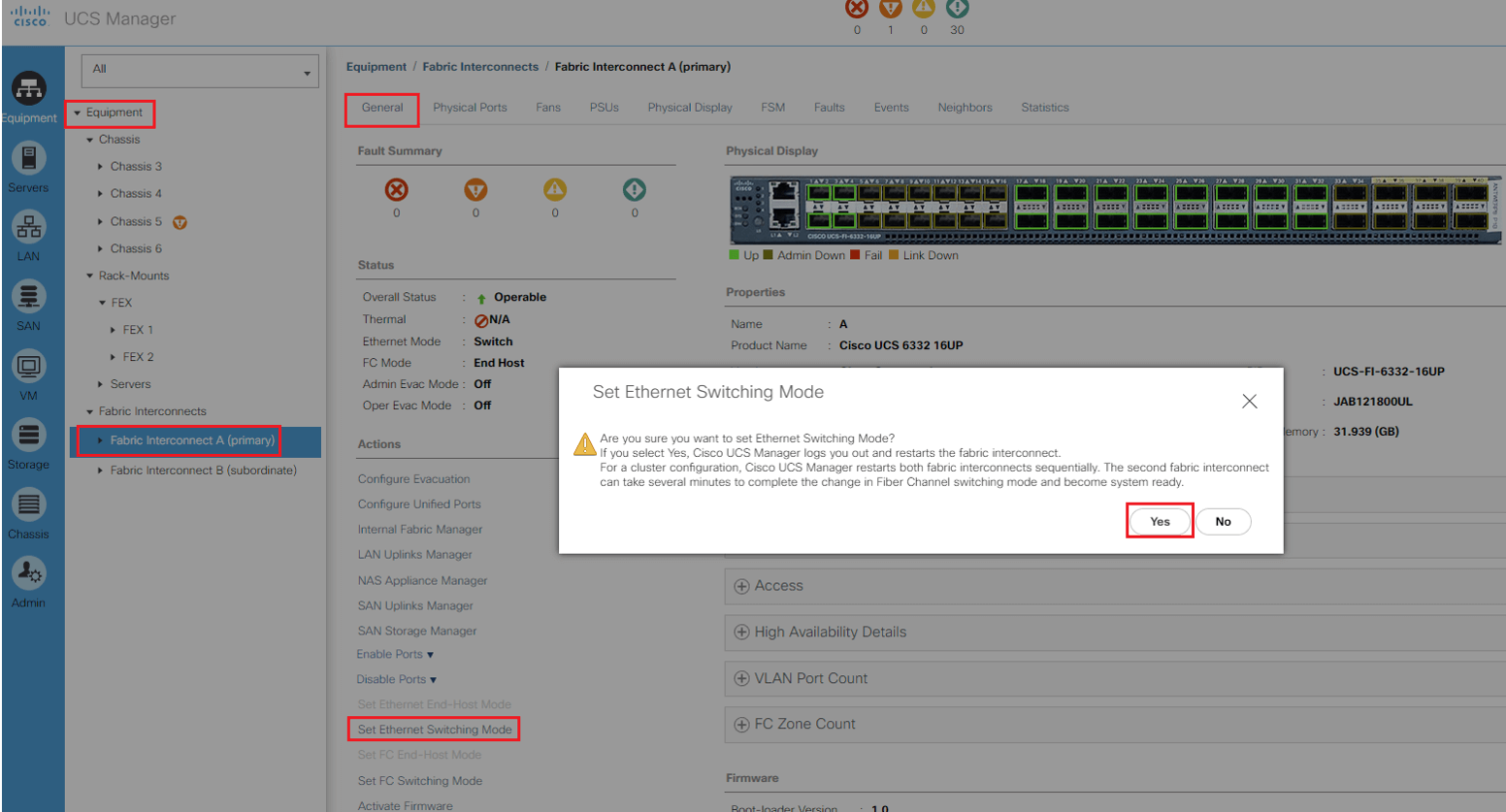
Fabric Interconnect Port-Types
By default, all fabric Interconnect port are unconfirmed. Below is fabric Interconnect ports can be in following states.
- Unconfirmed: Port is not configured and cannot be used.
- Server Port: Port used for Southbound connection to an IOM fabric Extender (FEX) module in a blade chassis.
- Uplink Port: his port is used for North bound Connection to the upstream Ethernet Switch. Uplink ports are always configured as Trunk port.
- Disabled: Port is configured either as uplink or Server port and is currently disabled by administrator.
In order to see , define and configure state of Port , Expending Fabric Interconnect Inventory from Equipment tab in the navigation pane
- Log in to UCS Manager | Click on Equipment tab |Click on fabric Interconnect A and Expend Ports
- Click on Ports and its current configuration will be displayed in right hand side.
- Right Click on port and select a new configuration for port from pop-up menu
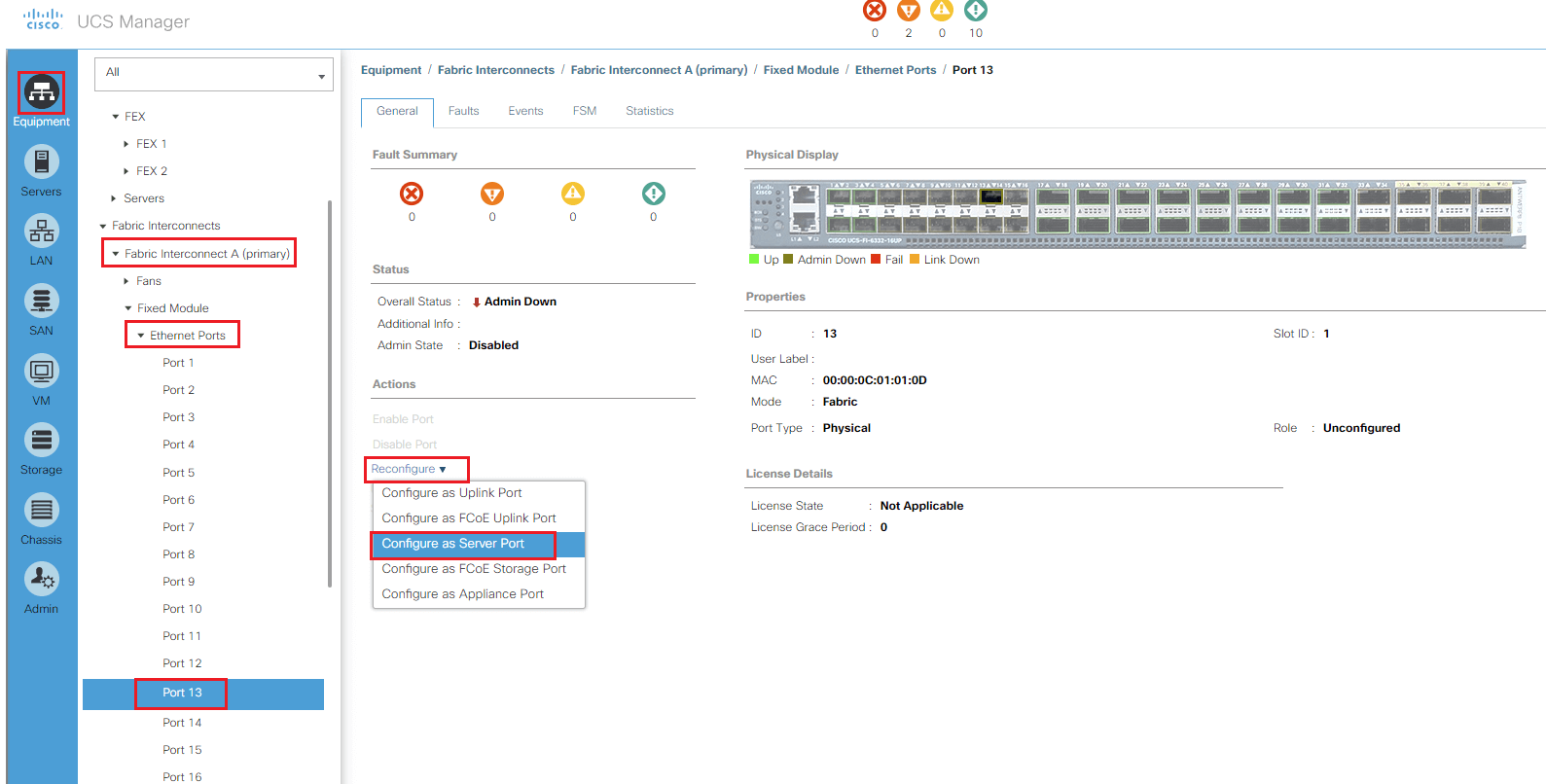
Another option to configure the ports is via LAN Uplink Manager. Which can be accessed by following:





LEAVE A COMMENT
Please login here to comment.